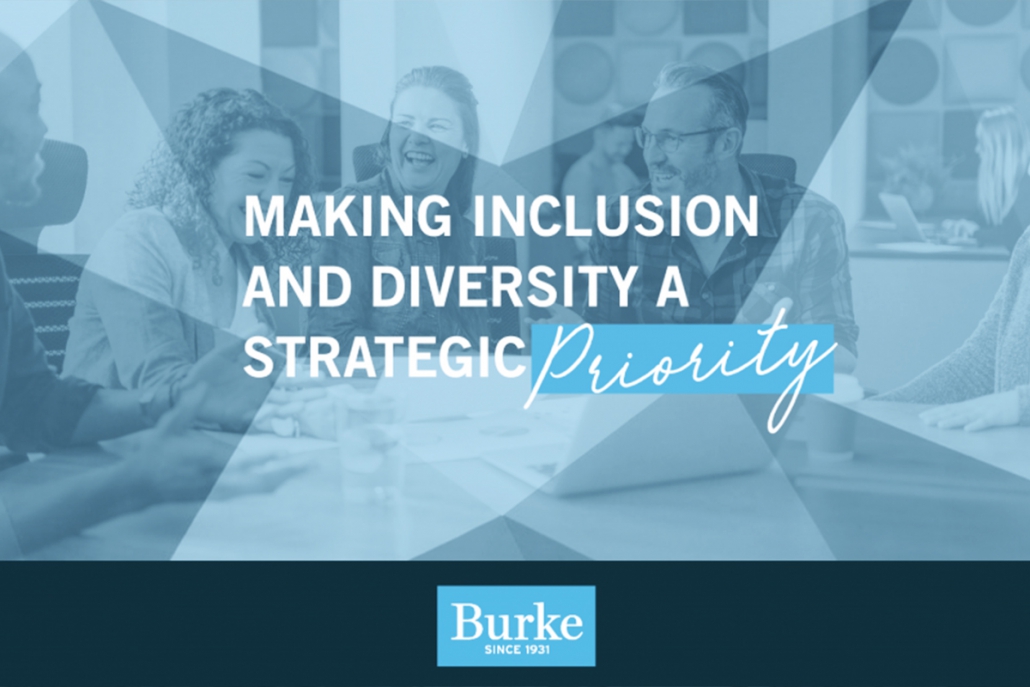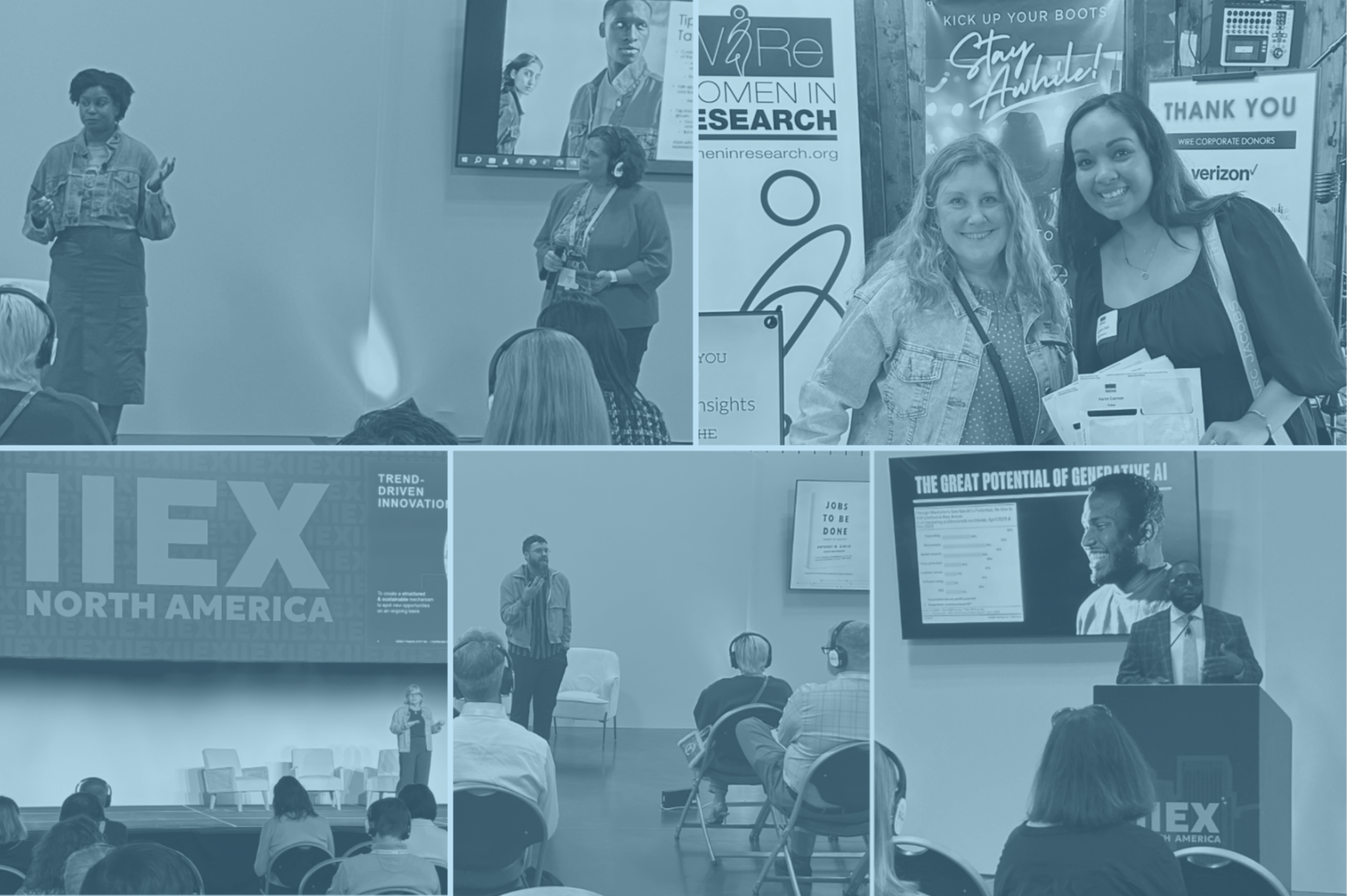
Making Inclusion and Diversity a Strategic Priority
by Michael Shewmon
There’s no question that embracing diversity in the workplace is essential for companies to attract and retain talent.
Research shows that diversity contributes to a higher-performing workforce, in a number of critical dimensions, including: increased innovation, faster problem solving, higher employee engagement, greater resilience, and faster overall growth 1, 2. In addition, we also know that diversity lends itself to different perspectives, dissenting opinions, and greater inclusion.
Simply put, fostering Inclusion and Diversity (I&D) is about doing what’s best for your organization.
In 2019, we began our journey to inclusion and diversity. As a company, we are committed to making I&D a foundational aspect of our culture, our day-to-day operations, and our approach to client management. And though we’re at the beginning of this important transition, we’ve already taken what we believe are some important first steps toward making I&D a strategic priority. It takes time. It takes effort. And it takes a desire to make a change. But, given the above, we believe it’s absolutely essential.
So, based on our experience, here are some tips on how you can prioritize I&D as a key component of your corporate strategy.
Create a committee that is reflective of the organization you are striving to be.
Begin by identifying the diversity champions within your organization and forming a committee to develop your I&D strategy. Pursuant to its purpose, the committee should consist of individuals from different backgrounds, experience levels and business functions. This will invite a variety of perspectives, aptitudes and insights.
At Burke, our “Kaleidoscope” group—inspired by the idea of unique perspective—acts as our dedicated I&D committee. In addition to championing diversity as one of our core strategic directives, Kaleidoscope helps ensure that our employees, clients, and partners feel respected and empowered to bring their authentic selves to work, every day.
Develop a mission and vision to guide your efforts.
Creating a mission statement can help clarify and define your I&D committee’s overall purpose. The statement should concisely explain the committee’s reason for being, while describing its intent. It’s also important to consider how your I&D mission statement aligns with—and complements—your organization’s overall mission statement.
In addition to your mission, a forward-facing vision statement can help create an aspirational image of what your I&D committee wishes to achieve 3. Expressing your I&D goals as an “ideal state” will provide a source of motivation and inspiration as you move forward.
Gain commitment from leadership to drive stakeholder buy-in.
Having leadership’s commitment to supporting and implementing an I&D strategy is crucial to changing a company’s culture. Leadership support can legitimize the committee’s efforts and help gain stakeholder buy-in 4. In our case, leadership embraced Kaleidoscope from the top down—which was crucial to our early progress.
Encourage committee members to become informed on I&D.
Literature abounds on the topic of inclusion and diversity in the workplace. Many industry organizations are also offering webinars and roundtables on the topic. So encourage your committee members to get informed—there’s no reason to jump in blindly.
Consult an expert to determine the best path forward.
Implementing an I&D program can be daunting—especially for those who aren’t experts in the field. As such, there are consultants who specialize in I&D implementation. With expertise on topics like implicit bias, conflict management, and how to conduct internal diversity assessments, an I&D consultant can help you address sensitive topics effectively and objectively.
Identify core pillars to help drive focus.
In the case of Kaleidoscope, we divided our overall I&D challenge into five core pillars: Education and Training; Business Strategy; Work Atmosphere; Recruiting; and Community. Each pillar has a specific goal, along with specific training requirements and activities aligned to that goal. Dividing the work into pillars allows the committee to divide its efforts into more focused, more manageable pieces.
Of course, this is just the beginning of an ongoing journey. Change, after all, doesn’t happen overnight. But the steps outlined above represent what we feel is a strong foundation for forward momentum. Momentum which we will continue to support and encourage, as we build toward a strategy—and a future—in which I&D is a seamless and fundamental aspect of corporate life.

As Group Manager in Account Management, Michael has a passion for leading cross- functional teams to successful outcomes and loves developing others along the way. Michael contributes to a variety of corporate committees and is a member of Burke’s Inclusion and Diversity team, Kaleidoscope.
As always, you can follow Burke, Inc. on our LinkedIn, Twitter, Facebook and Instagram pages.
Sources:
- Wainwright, Bronwyn. “Attract Top Talent through Diversity and Inclusion.” Effectory, 28 Feb. 2018, www.effectory.com/knowledge/attract-top-talent-through-diversity-and-inclusion/.
- Zojceska, Anja. “Top 10 Benefits of Diversity in the Workplace [INFOGRAPHIC INCLUDED].” Talentlyft, 20 June 2020, www.talentlyft.com/en/blog/article/244/top-10-benefits-of-diversity-in-the-workplace-infographic-included.
- Hawthorne, Madison. “The Purpose of Mission and Vision Statements in Strategic Planning.” Small Business – Chron.com, Chron.com, 25 Mar. 2019, smallbusiness.chron.com/purpose-mission-vision-statements-strategic-planning-13161.html.
- “Executive Commitment for D&I Is Critical for Success of Diversity Training.” The Kaleidoscope Group, The Kaleidoscope Group, LLC, 7 Feb. 2017, kgdiversity.com/executive-commitment/.








